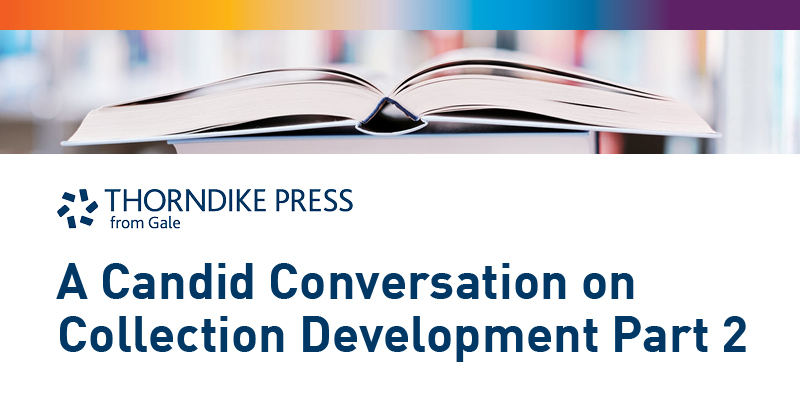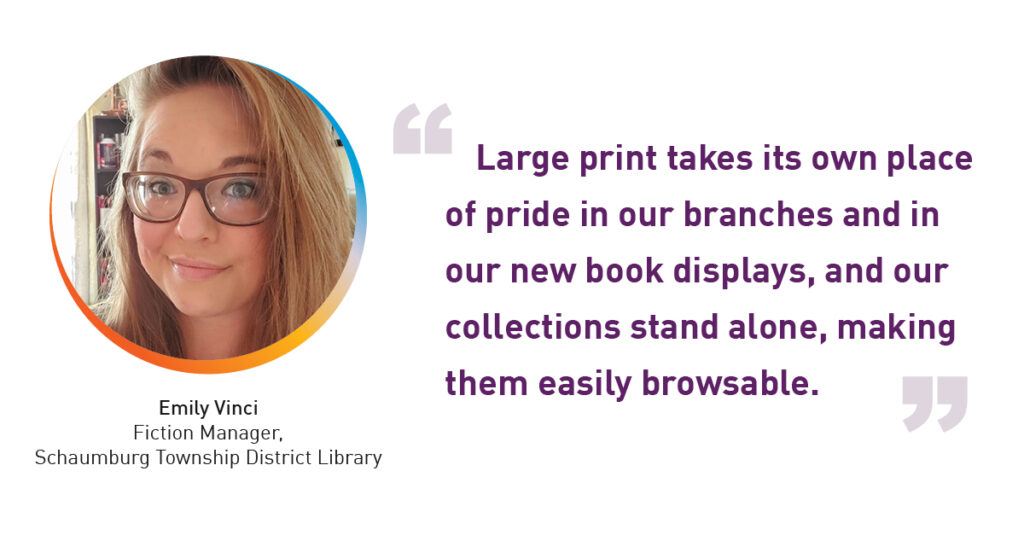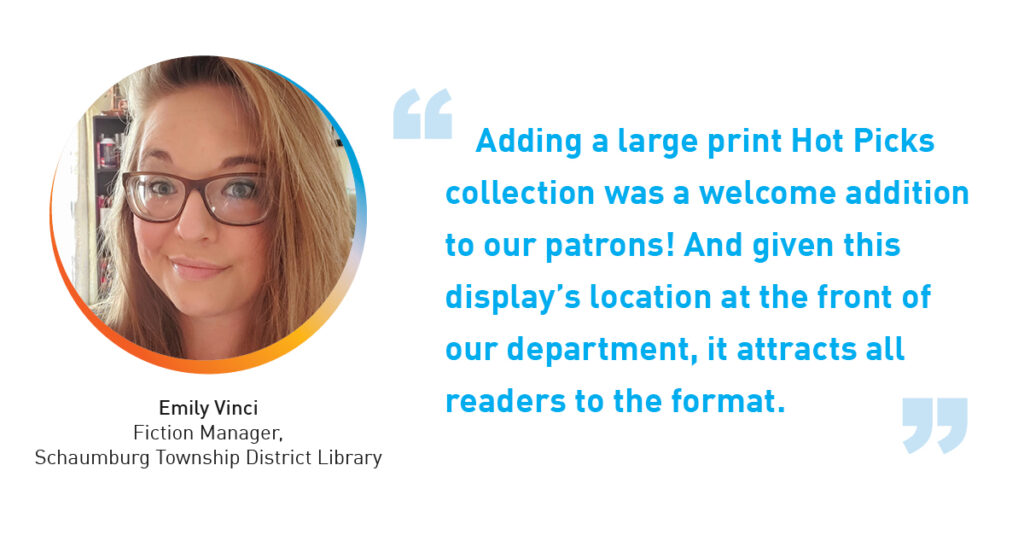| By Heather Booth, associate editor, Booklist |
Once the books are on the shelf, thoughtfully merchandising the collection will get the books into the hands of eager large print readers. Jill Haile, collection development manager at one of the country’s largest library systems in Jacksonville, Florida, ensures that browsable and holdable large print content is available even at the system’s midsize to small locations, but she understands browsing isn’t enough. “Staff promotion helps find new readers every day.” Catalog-linked thematic lists that are shared on social media—from Women’s History Month titles to romantic Bridgerton read-alikes—display large print editions, making it easy to place holds and reducing the stigma about readership of large print. “Large print takes its own place of pride in our branches and in our new book displays, and our collections stand alone, making them easily browsable.”
That ease of discovery—both guided by librarian-created lists and displays or by traditional browsing in easy-to-access shelves in prominent locations—has kept large print a vibrantly circulating collection even as some readers turn toward digital content. All thanks to shifts in perspective, marketing, and collection-development strategy.
At the Schaumburg Township District Library, librarians see the demand for large print every time they go to fill their most in-demand display. Librarian Emily Vinci explains, “Hot Picks are our version of the lucky-day kind of books: high demand, long holds lists on the new copies, but Hot Picks check out for a shorter period of time and are not hold-able. Adding a large print Hot Picks collection was a welcome addition to our patrons! And given this display’s location at the front of our department, it attracts all readers to the format.” Schaumburg also integrates large print into their regular display cycles with seasonal themes, topical collections, and genre-focused displays. Vinci suspects that the inclusion of large print in traditional print displays may do more to draw traditional print readers into the format, but the biggest circulation payoff comes with thematic large print displays, like Holiday Reads or Beach Reads. “I’m confident that all readers gravitate to those displays, regardless of format preference.”
Focusing on balance has paid off at Schaumburg, especially in two important large print collections. As their selectors take a closer eye at diversity and inclusion, they are seeking out, selecting, and finding a ready audience for large print editions of titles by Black, Indigenous, and People of Color (BIPOC) authors. Additionally, within the last five years, they have added a “small but mighty” selection of science fiction and fantasy in large print—a genre that’s outside of the perception of what typical large print readership would be. “This portion of the collection has proven very popular!”
In-person displays aren’t the only way to successfully market large print collections. Adult Collection Development Coordinator Monique Franklin of the Fort Bend County Libraries in Texas noticed a simple change in online merchandising that made a big difference in physical circulation. Large print titles began earning much more attention after the decision was made to place cover images and links to these items alongside those for traditional print and audio editions in the library’s online catalog. Franklin describes the patron response to discovering large print on the digital image carousel, “When we started putting [them] on our website the minute we knew they were coming out, patrons immediately started placing holds on them . . . and then it just kept going! I realized we need to make sure that we always have new large print content to fill that need.”
Read more or watch these librarians share in an on-demand Booklist webcast here.
Explore Standing Order Plans >>
About the Author
Heather Booth is an associate editor at Booklist. Booth spent the first two decades of her career as a teen services librarian in public libraries.




